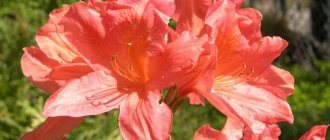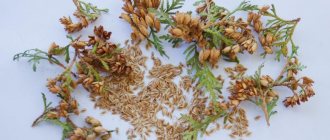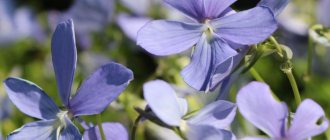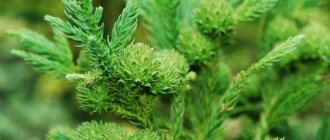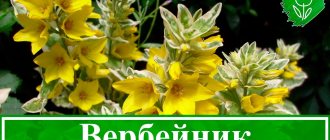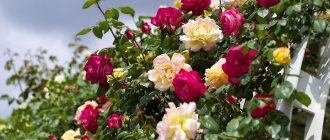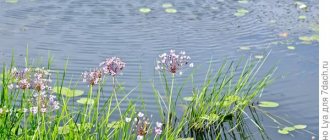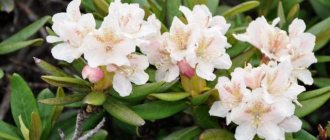Rhododendrons in the Urals, the care and planting of which require gardeners to take into account the climatic characteristics of the region, are common when creating landscape design. One of the determining factors is the choice of a suitable variety with good frost resistance and a long flowering period. The decorative nature of rhododendrons is associated with its lush and elegant flowering.
How to grow rhododendrons in the Urals
Rhododendron is grown in the Urals for its high decorative qualities. But the culture has its own characteristics: small annual growth, demanding care and participation of the gardener throughout the year.
For abundant flowering of rhododendron in the Urals, it is necessary to choose a suitable place, stock up on an acidic substrate, and carry out even watering and fertilizing.
Advice! For cultivation in the Urals, rhododendron varieties are selected that belong to zone 3-4 of frost resistance.
An important condition for growing ornamental shrubs in the Urals is its shelter for the winter: both from frost and from the drying effects of wind and sun. A biological feature of rhododendron is that next year's flower buds are formed at the end of the current season. If the buds are not preserved in winter, there will be no flowering in the new season.
LiveInternetLiveInternet
–Categories
Tomas Kinkade (13) In the animal world (182) Spring (83) VIDEO (507) Baking (1938) ***Pancakes (183) ***Buns, cheesecakes, buns. (140) ***Cupcakes (93) ***Easter and Easter cakes (184) ***Cookies (167) ***Pies. Charlottes. Casseroles. (332) ***Pies (117) ***Rulets (103) ***Bread. (77) Knitting (knitting, crocheting) (992) Ladies' magazine (279) Summer cottage (1055) *Eggplant (6) *Cabbage (8) *Potatoes (2) *Strawberries (12) *Cucumbers (15) *Peppers ( 9) *Tomatoes (30) *Flowers (flower beds) (350) Victory Day (116) For children (255) Homemade preparations (recipes) (475) Friends! (79) Woman (205) Magazine *Health* (333) Screen stars (188) Ringing cedars of Russia (142) Winter (97) Pictures (paintings, illustrations, paintings) (3135) Clipart (640) Transition buttons for LiRu (18 ) Indoor floriculture (39) Cat's world (84) Dolls (194) Cooking (various recipes) (2984) ***Dumplings. Dumplings. Manta rays. Khinkali. (50) ***All chicken (212) ***All fish (222) ***Cooking cheese (various) (14) ***for New Year and Christmas (210) ***Casseroles (58) ***Porridge (miscellaneous) (19) ***Culinary (kitchen) tricks (33) ***Drinks (Kvass. Juices.) (145) ***First courses (170) ***Lenten dishes (203) ***Salads (352) ***Lard (15) ***Sweets (91) ***Sauces (19) Legends, parables, aphorisms. (66) Summer (50) Masks (clipart) (15) World of travel (911) Music (353) Still lifes (315) New Year's page (339) Autumn (132) Postcards (120) Easter (97) Easter recipes (62) Holidays (349) Programs for PC. (309) Bird World (110) PNG Dividers (8) Frames (323) Photo Frames (PNG) (25) Religion (96) Christmas (70) Crafts (332) DIY (or DIY) (197) Scrap set (629) Poetry (162) Dances of the peoples of the world (18) Cakes (cooking) (561) Foreign lessons. (8) FS lessons (151) Comfort in the home (146) Porcelain (antiques) (136) Backgrounds, diagrams for Days
(102) Photos (138) Flowers (162) We sew ourselves (162) Esoterics (59) This is important! (51) This is interesting (867)
Rhododendron varieties for the Urals
Rhododendrons are divided into evergreen, semi-deciduous and deciduous. Frost-resistant rhododendrons for the Urals are characterized by increased acclimatization to cold climates.
Grandiflorum is one of the old varieties created on the basis of the Katevba rhododendron. Belongs to the evergreen species. The bush is highly branched, grows spreading and tall - up to 4 m. One of the most beautiful flowering shrubs. The flowers are lilac in color, with bright orange splashes on the upper petal. Flowers grow 6-7 cm in diameter, collected in inflorescences of 13-15 pieces. The stamens are long and curved. The flowers have no scent. Grandiflorum blooms in June. Withstands frosts down to -32°C.
Japanese is an unpretentious highly ornamental shrub. It forms a dense, branched bush, up to 1.8 m high. Japanese rhododendron is a deciduous shrub. It blooms for a month from the end of spring, at the same time the leaves bloom on the bush. The flowers have a pleasant aroma. They grow large - about 8 cm in diameter, 7-10 pieces are collected in an inflorescence. They come in various shades of orange, red and beige-yellow. Flowering begins after 3-4 years of cultivation.
Rhododendrons of the Lights series are an American selection of some of the most frost-resistant rhododendrons. Withstands frosts down to -40°C. The shrub is deciduous, grows up to 150 cm high, 130-150 cm wide. The crown is dense, spreading in most varieties. The branches grow straight. The leaves are wide, ovate or oblong, large. Depending on the variety, shiny, leathery or slightly pubescent.
In summer, the leaves have an olive green tint, which changes to burgundy in autumn. Flowering begins in late spring. The shades of the varieties are varied:
- white, white-yellow;
- light pink, pink;
- salmon;
- tangerine
The flowers are simple or semi-double, 5-6 cm in diameter. The inflorescences are spherical, containing 10-15 flowers.
Helsinki University is an evergreen rhododendron belonging to Finnish selection. It forms a spherical crown, 1-1.5 m high. Flowering begins in mid-June and lasts 2-3 weeks. The flowers have a soft pink hue with an orange center and dark burgundy splashes. The size of the flowers in diameter is 7-8 cm, collected in inflorescences of 12-15 pieces. The variety is exceptionally frost-resistant, withstanding temperatures down to -39°C.
Roseum elegans is an evergreen shrub bred in England. The bush grows spreading up to 3 m in height and 3.5 m in width, forms a rounded crown shape. The leaves are leathery, glossy, in the shape of an elongated oval of medium size. Young leaves have a red-brown tint when blooming, turning green as they grow. The flowers are deep pink with a reddish-brown spot. The shape of the flower is wide funnel-shaped with a wave along the edge. The inflorescences are compact, containing 15 flowers. Flowering begins in early June. There is no aroma. Withstands frosts down to -32°C.
Description of the plant
A beautifully flowering deciduous, semi-deciduous or evergreen plant is also called a rose tree in the literature due to the noticeable similarity of the inflorescences of most varieties with roses. The shape of the flowers is funnel-shaped, tubular or bell-shaped.
The homeland of the shrub or tree is considered to be East Asia, Japan and North America. The structure of rhododendron differs depending on the species. It can have both small and large leaf plates of an elongated or ovoid shape with smooth or pointed edges. Bisexual flowers form inflorescences in the form of racemes or corymbs. Solitary - rarely seen.
Planting rhododendron in the Urals
In the photo of rhododendrons in the Urals you can see that when planted in a suitable place and properly cared for, ornamental shrubs become long-lived in the garden. They can grow in a permanent place for more than 30 years. Some types of rhododendron are grown in large containers and moved indoors in winter.
In open ground, rhododendrons in the Urals are planted in diffuse shade or a place where they are illuminated by the sun for only a few hours a day. The flowers of some varieties fade and fade in the bright sun. Deciduous species require sunlight to a greater extent than evergreen ones.
Landing dates
Rhododendron is planted in the Urals in the spring, but before the plant begins to awaken. It is permissible to plant seedlings with a closed root system at any time of the warm season, excluding the moment of flowering and a few weeks after it.
Preparing the landing site
The place for growing rhododendron in the Urals is chosen carefully. It is necessary to take into account the size of the bush in adulthood, the variety’s requirement for shading and the proximity of crops. Do not plant rhododendron next to trees with the same shallow root system. Large trees will take on a lot of nutrition and moisture and can grow inside the rhododendron root system, damaging it.
Advice! Rhododendrons in the Urals are not grown in flooded areas and with close groundwater.
The soil at the planting site should be acidic. In another reaction, the soil layer is changed to a suitable one. It is best to grow ornamental shrubs in groups with crops that are similar in their requirements for soil acidity. In coniferous areas, rhododendrons are combined with thujas, junipers, and hostas. The distance between individual species is maintained at 0.7-1 m.
Landing rules
In the photos and videos about the care and planting of rhododendrons in the Urals, you can see that they do not differ from agricultural practices in other regions. The root system of rhododendron is superficial and grows wider than deep, so the planting hole is made spacious but shallow.
The place for growing in the Urals should conduct moisture well and be free of stagnation. Therefore, a drainage layer 20 cm high is poured onto the bottom of the pit. White broken brick is not used as drainage because of its inappropriate composition. It is better to use pebbles or expanded clay.
On clay soils, you should first check the operation of the drainage by pouring water into the hole. Due to the poor conductivity of clay soil, a well may form in the planting hole to drain water from the site. If, when testing drainage, the water does not drain for a long time, the planting site must be raised or a drainage pipe installed to remove excess moisture.
An acidic substrate is obtained from pine litter or high-moor peat, mixing it with garden soil taken from the planting hole. The seedling is lowered vertically, the root collar is not buried. The planting is shed abundantly with water.
After the substrate settles, it is poured so that the root collar is 2 cm above the general soil level. After planting, the soil is immediately mulched with pine bark, slightly retreating from the center of tillering. During the season, mulch is added several times so that the protective layer remains 7-10 cm high.
Preparing for planting - how to choose seedlings, where to plant
When choosing a seedling, it is worth considering a number of features. It is better to buy winter-hardy rhododendron in special stores or agricultural companies that reproduce these plants. In addition to confidence in the quality of the products, the buyer can receive here recommendations on the rules of transplantation and care.
When choosing, you should pay attention to:
- Level of frost resistance, which is especially important for survival in the region;
- Closed root system, as it can dry out;
- The condition of the seedlings is the integrity of the integument, the absence of damage, parasites and diseases;
- Level of cleanliness and humidity in the container.
After choosing a plant, it is recommended to pay attention to the selection of a place for planting.
It should be borne in mind that shrubs:
- They grow well in the lower tier, under trees, in diffused light;
- They do not tolerate complete darkness - this slows down and then completely stops the flowering process;
- They grow better in the northern areas of flower beds;
- They love moist air, so they grow well near bodies of water. However, it is worth considering that water should not accumulate at the roots, this can lead to rotting;
- They do not tolerate windy flower beds and do not tolerate drafts well.
Do not forget that these flowers do not tolerate unsuitable soil quite well.
So, the substrate must have:
- High acidity levels. It can be increased by adding high-moor peat or special chemicals;
- Outflow of excess moisture, without its accumulation;
- Loose, light structure;
- A covering of pine needles that will stop the soil from drying out.
If you take into account all the rules for choosing and planting a rose tree, in the coming years, it will delight its owners with rapid growth and abundant flowering.
Caring for rhododendrons in the Urals
Caring for rhododendron in the Urals consists of watering, fertilizing, and mulching the soil. The root system of the shrub is close to the soil surface, so techniques such as loosening and digging are not used. Weeding is carried out manually without the use of garden tools.
Watering and fertilizing
For rhododendrons in the Urals, soil and air moisture are more important than for other plants. The acidic substrate in which plants are planted tends to dry out quickly. Therefore, it is necessary to ensure that the soil always remains moderately moist and there is no stagnation of water at the roots. To increase air humidity, the bush is sprayed along the crown.
Advice! Increased moisture for rhododendron is especially necessary during the period of bud formation and flowering.
Water the plants only with soft, heated water; rain or river water is suitable for this. To soften and acidify, add several handfuls of high-moor peat to the water the day before watering.
It is best to feed rhododendrons in the Urals with liquid fertilizers. To do this, use specialized fertilizers for rhododendrons or flowering plants. Complex mineral fertilizers are also suitable. Do not use manure or ash to feed rhododendrons.
Trimming
The pruning of ornamental shrubs in the Urals is minimal. The shoots grow slowly and form a crown on their own. In the spring, sanitary pruning is carried out, removing dry or broken branches. On shoots with a diameter of more than 1 cm, sections are treated with disinfectant compounds.
A peculiarity of rhododendrons in the Urals is that the intensity of flowering in one year is followed by the appearance of a few flowers in another. To eliminate this frequency, it is necessary to break out the faded inflorescences. Thus, the plant has more strength to form next year’s flower buds.
Protection from diseases and pests
Rhododendrons in the Urals are most often subject to fungal diseases, chlorosis, leaf spot and rust. Diseases appear due to violations in care, insufficient acidity and aeration of the soil. To prevent the occurrence of diseases in spring and autumn in the Urals, the bush is sprayed with Bordeaux mixture. For chlorosis, watering with iron chelate is used.
Advice! Spruce trees contribute to rust damage as intermediate carriers, so joint cultivation of crops is not recommended.
Rhododendrons in the Urals are affected by pests such as:
- mealybugs;
- scale insects;
- rhododendron flies.
Insecticides are used against them. Acaricides are used to get rid of spider mites, bedbugs and weevils. Slugs and snails are removed manually.
Pests and diseases
Rhododendron has good immunity. But there are 3 diseases that are most often noted in cases of poor care:
- Chlorosis.
Due to the low acidity of the soil, the plant does not receive magnesium and iron. As a result, the leaf tissue between the veins acquires a yellowish-green tint, since rhododendron is not able to fully synthesize chlorophyll. Acidification of the soil will save the plant. Colloidal sulfur shows a good result - 2-3 tbsp. l./bush
- Powdery mildew
. Affects deciduous species. Development provokes dense plantings. Spraying plants with Topaz will help in the fight. But at the initial stage of development, the disease is slowed down by adjusting care measures.
- Late blight
. If left untreated, the disease destroys the plant: first the leaf plates wither and dry, then necrosis affects the shoots. Development, in our opinion, is provoked by stagnant moisture and heavy soil. When the disease appears, the affected parts are removed and the plant is sprayed with a fungicide 2-3 times per season. If the problem is in the soil, replanting to another area may be necessary.
The main pests are spider mites and acacia false scale insects. Sucking insects feed on the juices of the plant, weakening it. If they become heavily infested, they can destroy the rose tree. An effective method of protection is spraying with an insecticide (Aktara, Aliot). If there are numerous colonies, the treatment is repeated after 7-10 days.
Rhododendron is a heat-loving crop, which, thanks to the constant work of breeders, has become possible to grow in the Urals. In our opinion, the gardener's desire to see a blooming rose tree and his constant care for the plant is the key to success.
How to cover rhododendron for the winter in the Urals
Evergreen rhododendrons in the Urals do not shed their leaves for the winter. A peculiarity of the species is that the leaves continue to evaporate moisture even in winter, and the root system, being in frozen ground, cannot supply water to the plant. To provide the plant with moisture, in the fall, before frost, the bush is watered abundantly and sprayed along the crown. When subzero temperatures set in in the Urals, the leaves of evergreen rhododendrons become limp and curl. Thus, the plant is protected from moisture loss.
Rhododendron in the Urals does not tolerate stagnant moisture near the root system. Excess water accumulates when snow melts in the spring. Therefore, in the fall, a groove is made in advance near the bush for the outflow of water. It is important not to damage the root system.
Before preparing rhododendron for winter in the Urals, its root system is protected by mulching. To do this, it is best to use rotted pine needles mixed with peat. For young plants, a layer of mulch is poured 5-10 cm high, for adult bushes - about 20 cm.
Frost-resistant rhododendrons in the Urals need to be protected for the winter not so much from frost, but from cold winds and sunburn at the end of spring. For this purpose, even for mature overgrown shrubs, air-dry shelters are built. A frame is made over the bush, which, depending on the size, can be made of metal arches or boards knocked together in the form of a hut. A breathable material, such as burlap or lutrasil, is placed over the frame. Sheltering rhododendron for the winter in the Urals begins when frost sets in around -10°C. If covered earlier, the plant may be locked inside.
If the evergreen rhododendrons in the Urals were not covered, the snow mass can break branches or buds, so the snow from the crown must be periodically shaken off. From drying winds and sun rays, put up screens or plant plants where they will not be exposed to weather influences.
Advice! Rhododendrons planted in groups, including with other plants of the Heather family, overwinter better.
In spring, the shelter is removed gradually so that the early awakening plant is not damaged by return frosts. But they also make sure that the shelter is not excessively hot, otherwise the flower buds may fall off.
If the leaves of an evergreen rhododendron in the Urals after winter do not take on the usual elasticity for the warm season and do not straighten, this means that they have been severely dried out. In this case, it is necessary to start intensive watering and spraying with warm water. The root zone is cleared of snow as quickly as possible so that the soil begins to warm up. Frozen branches are cut back to healthy tissue.
Beneficial features
In moderate quantities and as prescribed by a doctor, rhododendron preparations have the following properties:
- bactericidal;
- antipyretic;
- painkillers;
- calming;
- sweatshop.
This once again proves that everything is good in moderation, and even poisons have healing properties. With the help of this plant, you get rid of shortness of breath and swelling, it improves cardiac activity, and lowers blood pressure.
Rhododendron leaves are used in the treatment of rheumatism, epilepsy, colitis and colds, as well as chronic bronchitis and some other diseases. Tea made from the leaves of the plant can reduce headaches and sore throats, as well as relieve coughing with phlegm.
Contraindications to the use of wild rosemary preparations are heart disease, pregnancy, lactation, and renal dysfunction.
Reproduction of rhododendrons in the Urals
Reproduction of rhododendron in the Urals is possible by generative and vegetative methods. The seed propagation method is one of the longest. Seeds are sown in planting containers in soil suitable for heather crops. The crops are covered with film or glass and placed in a bright place for germination. After sowing, seedlings appear within a month, during which time they are moistened as needed, ventilated, and condensation is removed.
When a pair of leaves appears, the seedlings are planted more spaciously. When transplanting, it is buried down to the cotyledons so that the root system begins to develop. In the first year, seedlings are grown in a cool, bright room. Next year they are planted on ridges for growing. Rhododendron planted from seeds begins to bloom at 6-8 years.
One of the most common and natural methods of vegetative propagation for rhododendron is layering. To do this, in the spring, a well-bending side shoot is pressed to the ground. Strengthen it in a pre-prepared ditch 15 cm deep. The shoot is placed so that its top remains above the ground surface. The top of the shoot is covered with soil suitable for rhododendron.
Throughout the season, the allocated shoot is watered together with the main bush. In autumn, independently formed plants are separated from the mother bush and planted separately.
Trimming
Rhododendrons are pruned in the spring. The exception is azalea. This plant is pruned after the complete completion of its flowering cycle, as well as after transplantation.
If the azalea has grown greatly and covered the garden paths or windows of the country house, its shoots are cut off to a thickness of 4 cm and the wounds are smeared with garden varnish. Within a year after such pruning, the bush is renewed due to the awakening of dormant buds.
Recent posts Chainsaw or electric saw - what to choose for the garden? 4 mistakes when growing tomatoes in pots that almost all housewives make Secrets of growing seedlings from the Japanese, who are very sensitive to the soil
Shrub pruning is required to renew and awaken dormant buds
Anti-aging pruning is required for old bushes and plants damaged by frost. The oldest shoots are selected from them and shortened to 40 cm. The bushes are rejuvenated in two stages, half a bush every year. With such a rarefied interval, plant renewal occurs less painfully.
Top dressing
The flower is fed twice throughout the year:
- In spring - Add nitrogen-based fertilizers.
- In summer - Immediately after flowering, add superphosphate.
For convenience, you can purchase special fertilizers for this plant at a gardening store, which are used strictly according to the instructions. At the end of summer and autumn, the bush is not fertilized so that it begins to prepare for winter and does not grow new shoots. Every three years, very carefully remove the top layer of soil, trying not to touch the roots. Then a new layer of cow dung mixed with peat is poured on top.
Photo
Below you can see a photo of rhododendron:
Frost-resistant variety Roseum Elegance:
Rhododendron Smirnova:
Variety Grandiflorum:
Rhododendron Japanese:
Rhododendron Lights:


